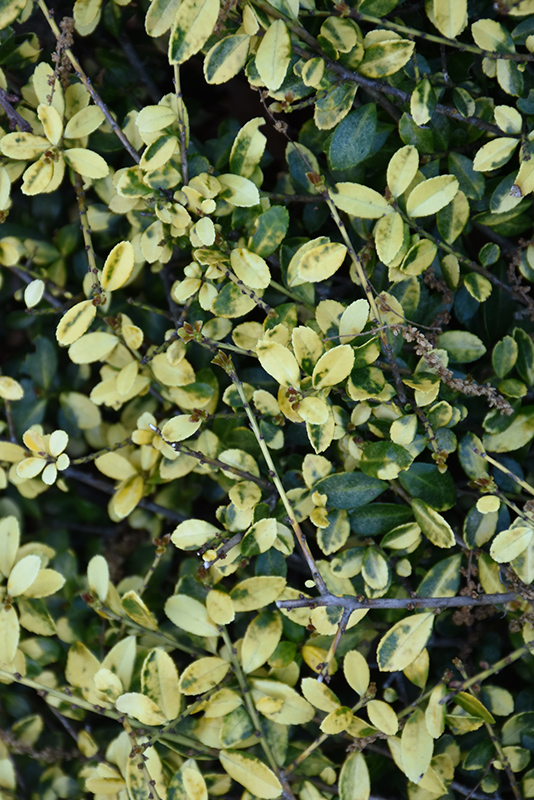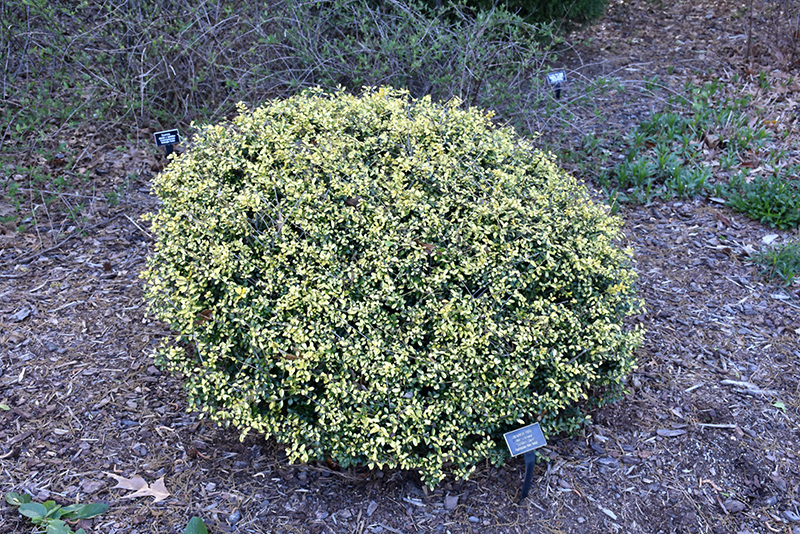Height: 24 inches
Spread: 24 inches
Sunlight:
![]()
![]()
Hardiness Zone: 6b
Other Names: Box-leaved Holly
Description:
Noted for its spectacular golden-yellow foliage on the upper branches that stand out against the green foliage below; its mounded compact growth habit makes it perfect for smaller areas; can be sheared for a formal appearance
Ornamental Features
Golden Gem Japanese Holly is primarily valued in the garden for its ornamental upright and spreading habit of growth. It has attractive gold evergreen foliage which emerges yellow in spring. The small glossy oval leaves are highly ornamental and remain gold throughout the winter.
Landscape Attributes
Golden Gem Japanese Holly is a dense multi-stemmed evergreen shrub with an upright spreading habit of growth. Its relatively fine texture sets it apart from other landscape plants with less refined foliage.
This is a relatively low maintenance shrub, and is best pruned in late winter once the threat of extreme cold has passed. It is a good choice for attracting bees to your yard. It has no significant negative characteristics.
Golden Gem Japanese Holly is recommended for the following landscape applications;
- Mass Planting
- Hedges/Screening
- Rock/Alpine Gardens
- General Garden Use
- Naturalizing And Woodland Gardens
Planting & Growing
Golden Gem Japanese Holly will grow to be about 24 inches tall at maturity, with a spread of 24 inches. It has a low canopy with a typical clearance of 1 foot from the ground. It grows at a medium rate, and under ideal conditions can be expected to live for 50 years or more.
This shrub does best in full sun to partial shade. It prefers to grow in moist to wet soil, and will even tolerate some standing water. It is particular about its soil conditions, with a strong preference for rich, acidic soils. It is quite intolerant of urban pollution, therefore inner city or urban streetside plantings are best avoided, and will benefit from being planted in a relatively sheltered location. Consider applying a thick mulch around the root zone in winter to protect it in exposed locations or colder microclimates. This is a selected variety of a species not originally from North America.



